Food you can forage: Four edible plants to look out for in June
Whether you want to avoid processed foods or simply enjoy more time outdoors, embrace your inner hunter-gatherer with Tiffany Francis’s roundup of things to forage in June
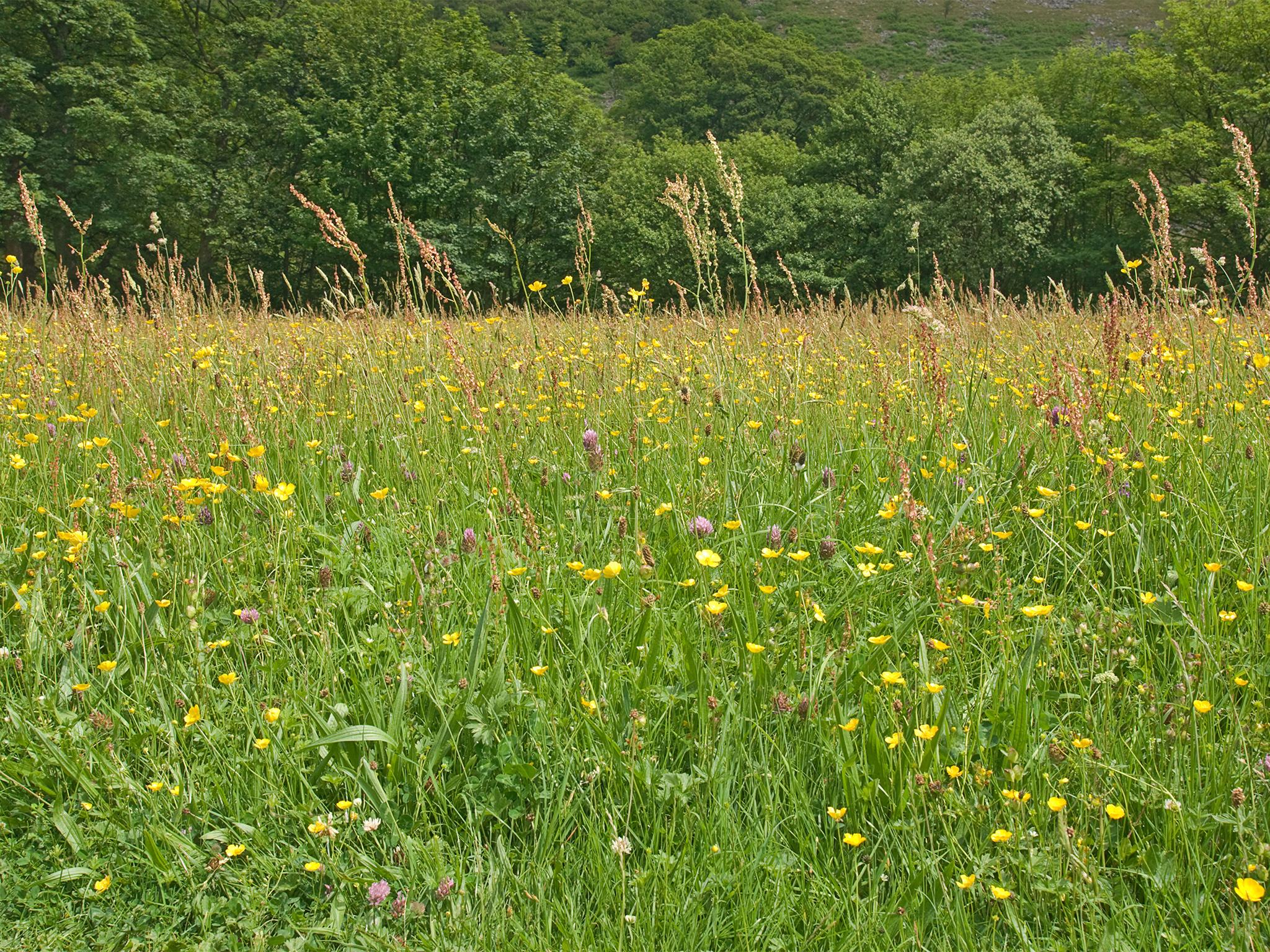
Pignut
Conopodium majus
May to August
Shakespeare must have thought highly of pignuts, as Caliban offers them to Stephano and Trinculo in a bid to secure their loyalty in The Tempest.
Like truffles, pignuts are a favourite food of wild pigs, who snuffle into the soil to dig up the nutty root tuber.
Found in meadows, pastures and woodlands on alkaline soils, the plant above ground is recognisable for its tall stems and white umbrella-shaped flowers.
It can be difficult to follow the stem through the ground, as the tuber can sometimes be buried quite deep, but it’s worth the effort as the nut itself tastes of earthy hazelnuts.
Once the root has been found, wash and peel it before eating it raw.
It can also be boiled or roasted like chestnuts, or added to noodle soups with ginger and soy sauce.
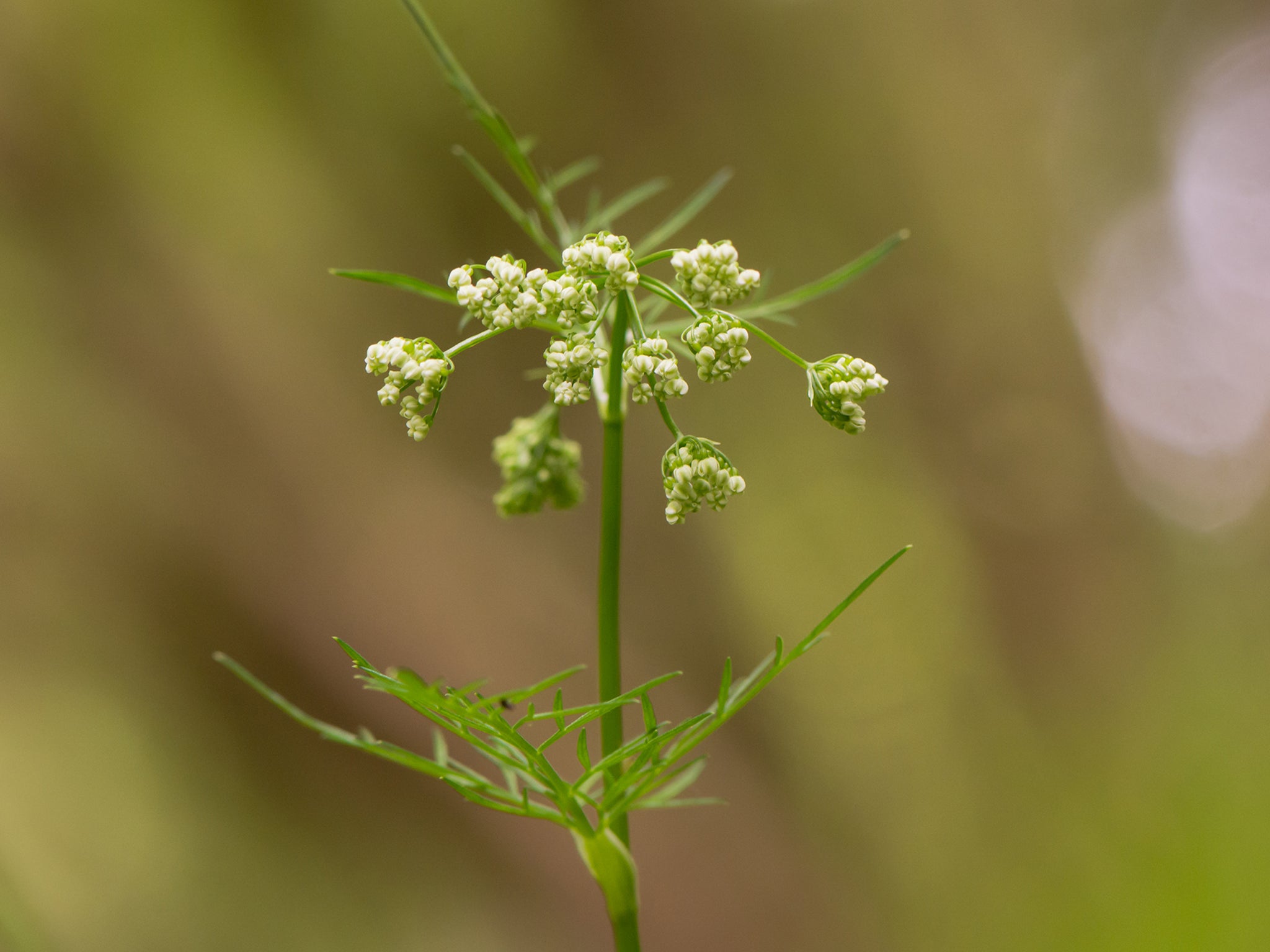
Lovage
Ligusticum scoticum
April to October
Lovage has carved a place for itself in medieval folklore, with a name that literally means “love-ache” (“ache” being the medieval word for parsley).
It was commonly thought to have aphrodisiacal qualities and King Charlemagne was so fond of the plant that he grew it in each of his many gardens.
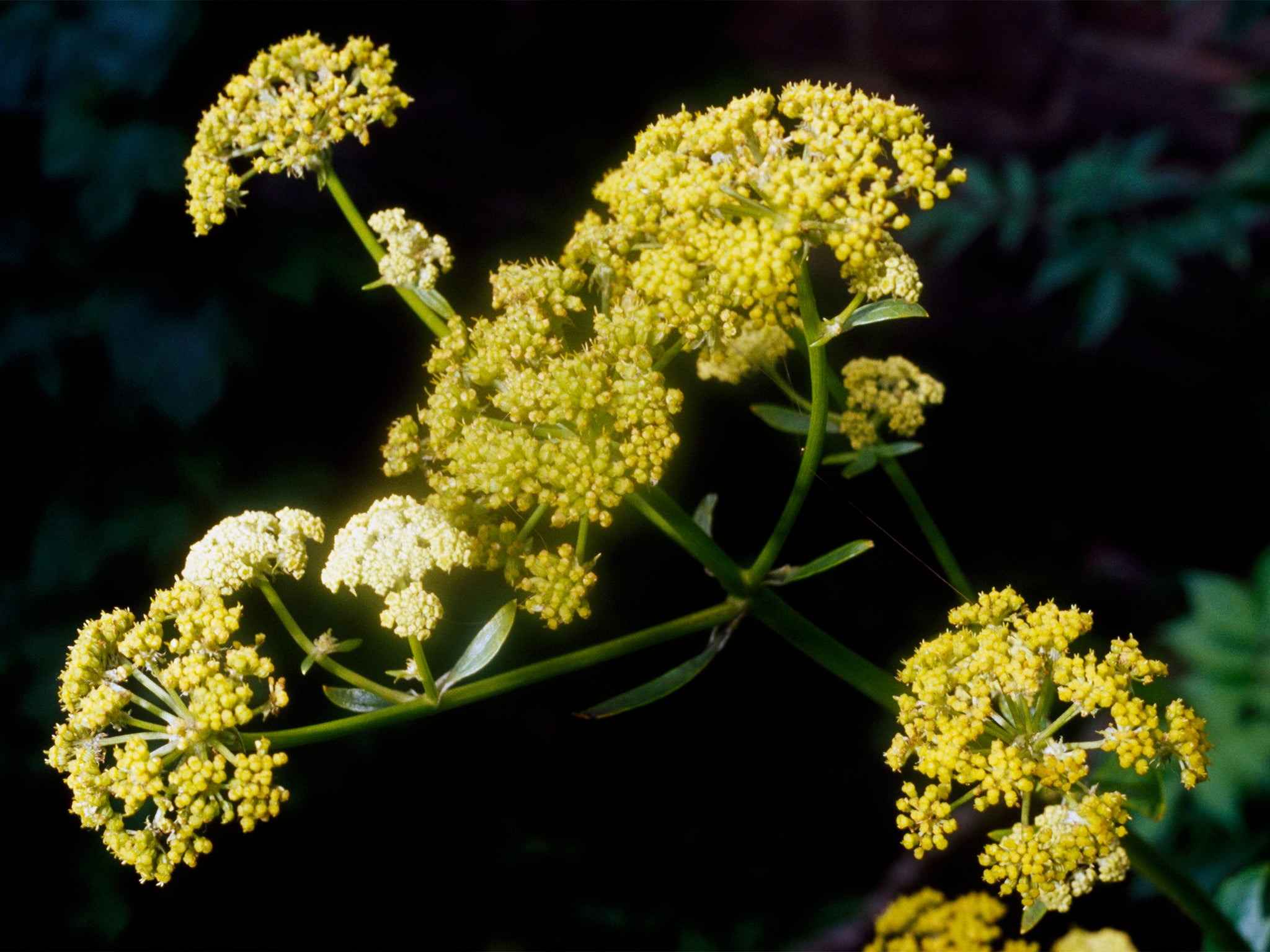
Today it is found on sea cliffs, rocky soils and on the coasts of Scotland and Northern Ireland, where it can grow up to 60cm tall and 1m wide.
Stems are thick with large, toothed, diamond-shaped leaves and the flowers form yellow clusters like inside-out umbrellas.
Wild lovage can be confused with the cultivated variety Levisticum officinale, a similar plant from southern Europe that is grown for its leaves, stems and roots, primarily for use in meat and vegetable extracts and herb liqueurs.
The leaves bear a strong aroma of celery and yeast and make a great addition to soups to enhance the flavour of other vegetables.
They can also be used to wrap around red meat before roasting. As a herb, lovage partners well with oily fish and vegetable pasta and also makes a healthy tea full of B and C vitamins.
Wild marjoram
Origanum vulgare
April to September
Wild marjoram is one of my favourite summer herbs, not only due to its pizza-like aroma, but also because it attracts an array of beautiful butterflies.
Despite the Latin name, it is not to be confused with oregano, the Central American herb Lippia graveolens found on supermarket shelves that is similar in taste and scent.
Marjoram grows in wondrous clusters along scrub, grassland and hedgerows on chalky soils, particularly abundant in southern Britain and blossoming into pink flowers that have the same aromatic quality as the leaves; these are small and slightly hairy with tall stems.
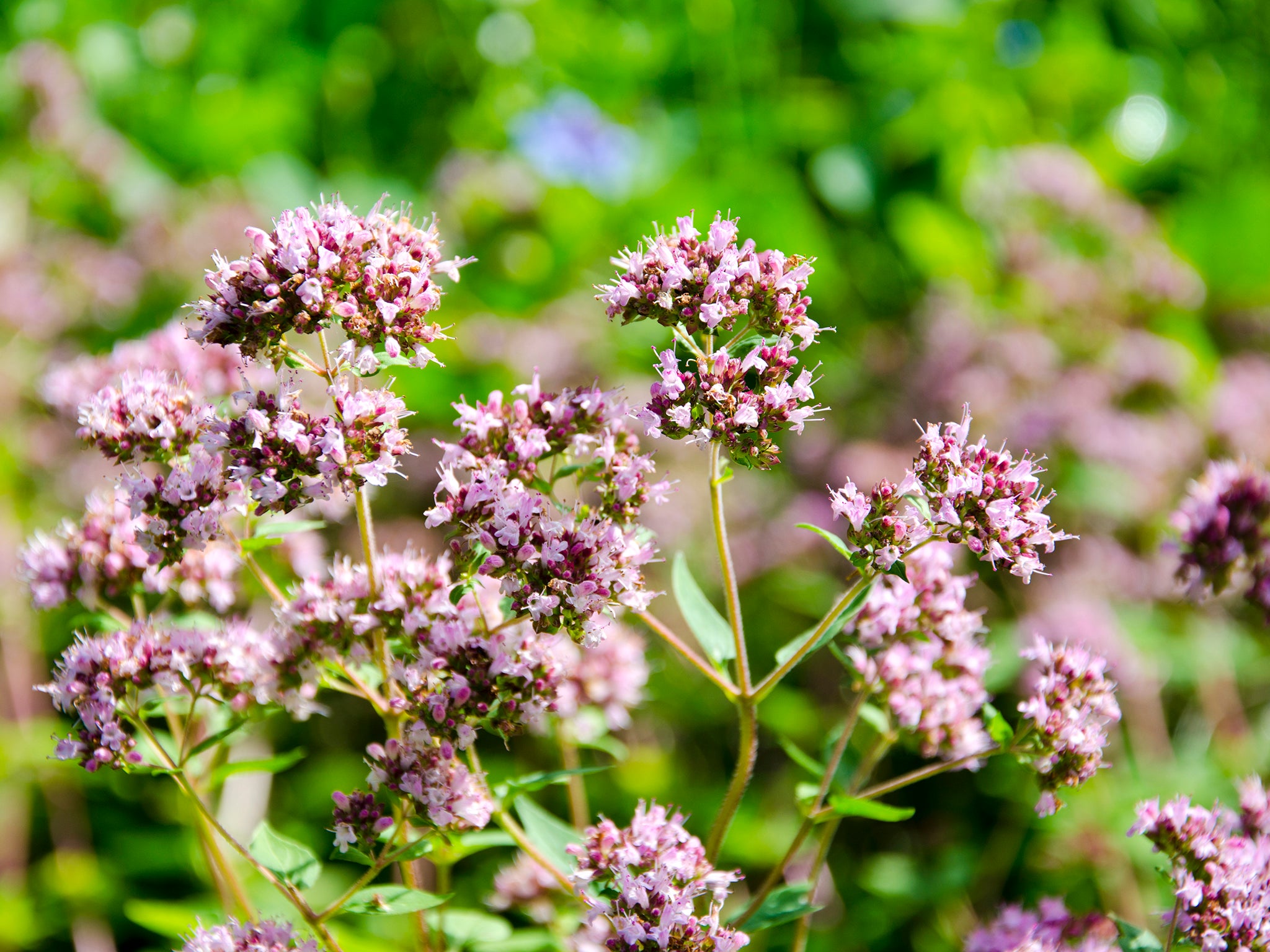
A popular addition to Greek and Mediterranean cookery, wild marjoram is a wonderful herb and worth drying to keep a full stock throughout the year; when doing so, try to pick stems without flowers in order to leave enough blossom for the pollinators.
Add fresh or dried to stews, soups, pasta sauces, risottos and pizza, or infuse a few leaves in sugar to create a unique ingredient for the kitchen cupboard.
Bog myrtle
Myrica gale
May to October
While the sweet scent of bog myrtle leaves has rendered it a traditional plant in royal wedding bouquets, it was also once thought to hold magical powers; historians believe a group of Norse warriors known as the Ulfhednar (ulf-hied-nirh) brewed the leaves into a boozy drink to cast themselves into a trance-like rage, readying themselves for bloody battle.
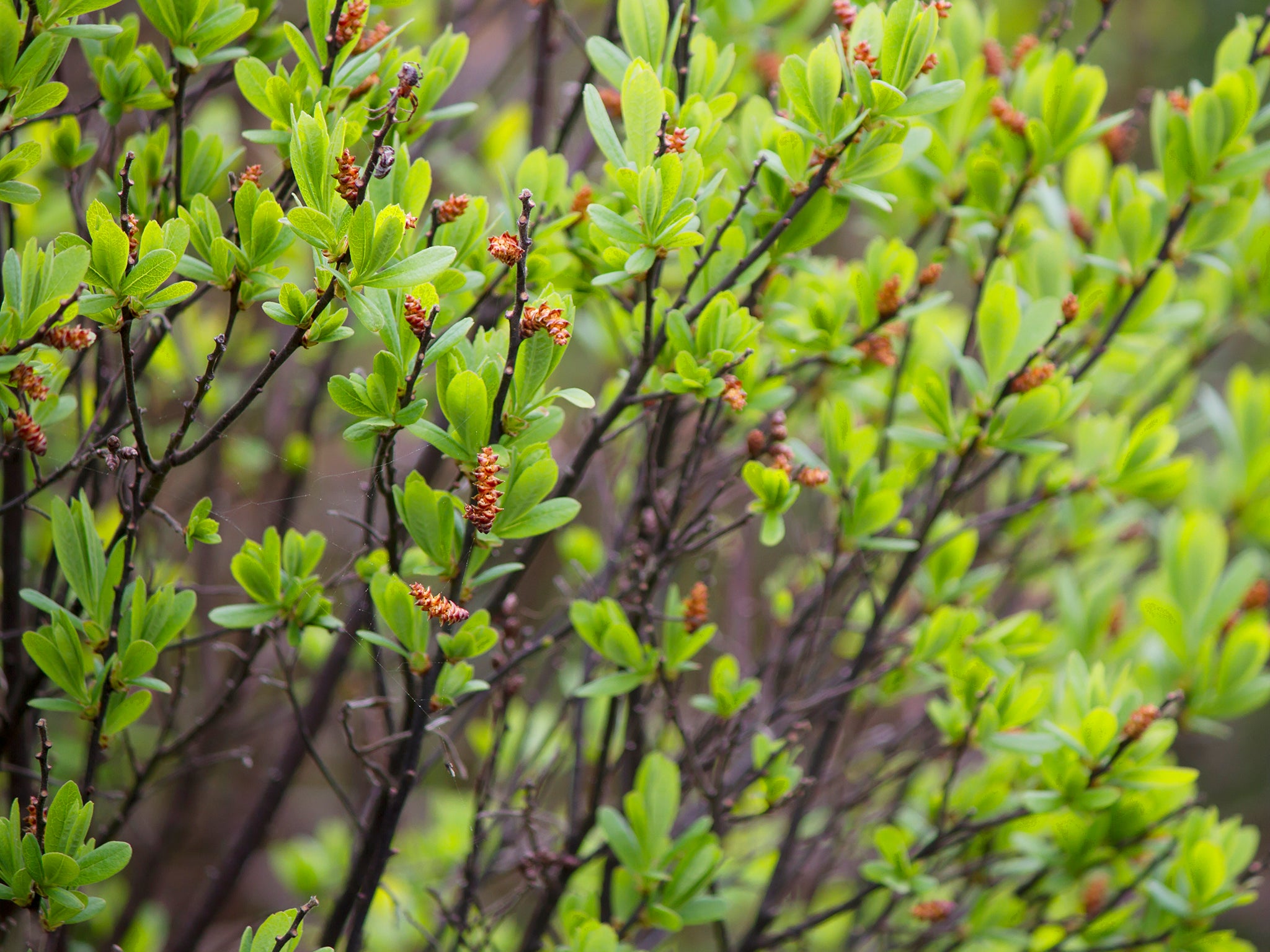
Today, it is a fairly peaceful plant growing locally throughout Britain, except in the southeast, on moors and heathland with more acidic soils.
The fragrant leaves are long and oval-shaped, but red (female) and orange (male) catkins grow before the leaves and contain small, purplish seeds.
Like many plants, the leaves were once used for flavouring beer before hops became popular in Britain.
Home brewers can give this a go and they can also be used as a botanical to flavour homemade spirits like gin.
Alternatively, the leaves and berries can be dried and added to autumn stews, or chopped and combined with butter and wild marjoram to make a delicious coating for roast chicken.
‘Food You Can Forage: Edible Plants to Harvest, Cook and Enjoy’ by Tiffany Francis is published by Bloomsbury, £16.99
Join our commenting forum
Join thought-provoking conversations, follow other Independent readers and see their replies
Comments